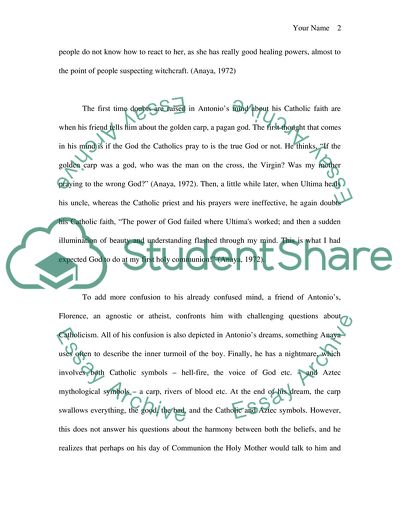Cite this document
(“Analysis of the Book Bless Me, Ultima by Rudolfo Anaya Essay”, n.d.)
Analysis of the Book Bless Me, Ultima by Rudolfo Anaya Essay. Retrieved from https://studentshare.org/religion-and-theology/1545477-1in-his-search-for-identity-antonio-struggles-to-find-his-personal-belief-and-value-system-please-investigate-antonios-religious-quest-and-discuss-the-juxta
Analysis of the Book Bless Me, Ultima by Rudolfo Anaya Essay. Retrieved from https://studentshare.org/religion-and-theology/1545477-1in-his-search-for-identity-antonio-struggles-to-find-his-personal-belief-and-value-system-please-investigate-antonios-religious-quest-and-discuss-the-juxta
(Analysis of the Book Bless Me, Ultima by Rudolfo Anaya Essay)
Analysis of the Book Bless Me, Ultima by Rudolfo Anaya Essay. https://studentshare.org/religion-and-theology/1545477-1in-his-search-for-identity-antonio-struggles-to-find-his-personal-belief-and-value-system-please-investigate-antonios-religious-quest-and-discuss-the-juxta.
Analysis of the Book Bless Me, Ultima by Rudolfo Anaya Essay. https://studentshare.org/religion-and-theology/1545477-1in-his-search-for-identity-antonio-struggles-to-find-his-personal-belief-and-value-system-please-investigate-antonios-religious-quest-and-discuss-the-juxta.
“Analysis of the Book Bless Me, Ultima by Rudolfo Anaya Essay”, n.d. https://studentshare.org/religion-and-theology/1545477-1in-his-search-for-identity-antonio-struggles-to-find-his-personal-belief-and-value-system-please-investigate-antonios-religious-quest-and-discuss-the-juxta.


